Many photographers enjoy exploring the world around them with macro and close-up photography. The basic difference between these similar genres of photography is the amount of magnification achieved, with a 1:1 magnification generally accepted as an example of macro photography. Images at this level of magnification also have more details than are achieved with close-up photography. The camera gear used for macro photography can be quite specialized and costly which can be a barrier for many photographers. This article features a small selection of close-up photography images all of which were shot hand-held in available light using a set-up that cost about $875 CDN including camera body, lens and extension tubes.
The purpose of this article is certainly not to suggest that a set-up in this price range and with a small sensor can match the image quality of a full-blown macro photography set-up…it can’t. Hopefully what this article will demonstrate is that it is possible to have a lot of fun creating pleasing close-up images with a modest investment in equipment. First, let’s have a look at the gear that I used to capture the images in this short article: Nikon 1 J5, 1 Nikon 30-110mm f/3.8-5.6 VR zoom lens, 21mm and 16mm MOVO extension tubes for Nikon 1.

I love using this gear set-up for close-up photography as it is small, light and easy to handle. The flip screen on the J5 comes in very handy, especially when shooting down on subjects with the camera raised over my head – the second butterfly image in this article is an example.
I went to the Niagara Butterfly Conservatory for a few hours with the original intent of testing a new B+W NL-5 Close Up Lens that I recently purchased. While it is still early in my assessment I quickly discovered that I don’t really like using a close-up lens, so I switched to extension tubes to capture the images presented here.
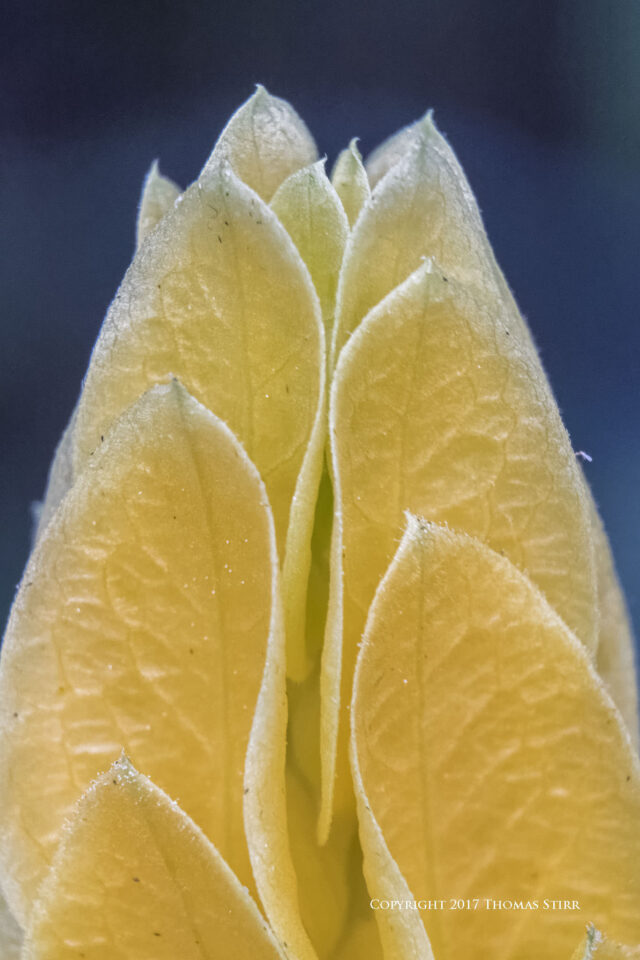
Since many photographers who engage in close-up photography enjoy capturing images of plants and insects this article features a small selection of each.

You’ll notice in the EXIF data that I captured all of the images in this article using an aperture of f/8 at ISO-3200. I decided to risk some potential image softening from diffraction shooting at f/8 with my small sensor Nikon 1 J5 in order to get some additional depth-of-field.
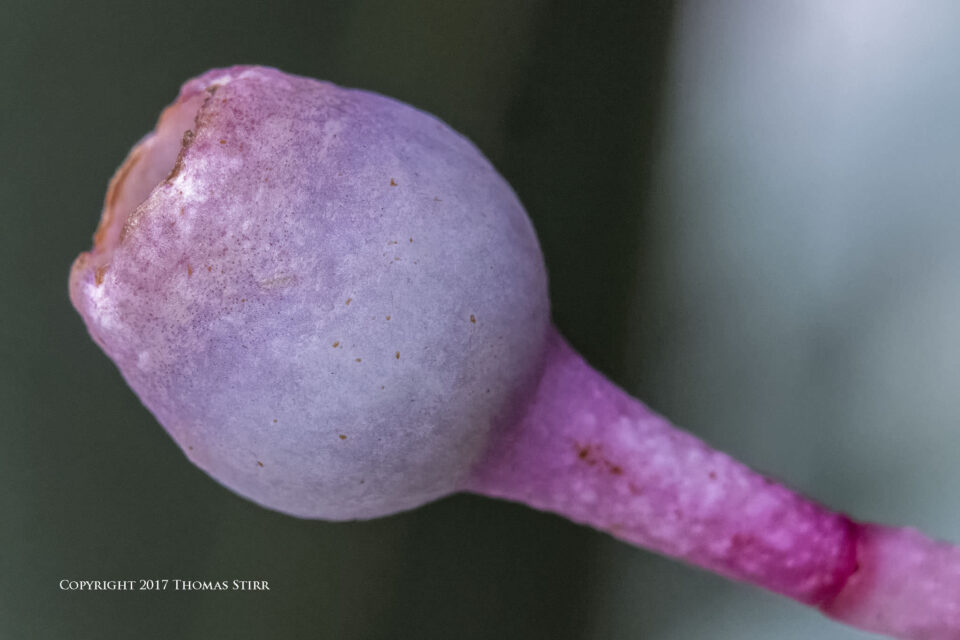
My choice of ISO was made to help ensure reasonable shutter speeds as to avoid potential image blur when shooting hand-held. In most cases I used shutter speeds of at least 1/100th of a second, although you will notice a few images captured at shutter speeds slower than that – some as slow as 1/30. Since I shoot in RAW I never hesitate at all to capture images with my Nikon 1 gear using a camera setting of ISO-3200 as I can deal with potential noise in post.
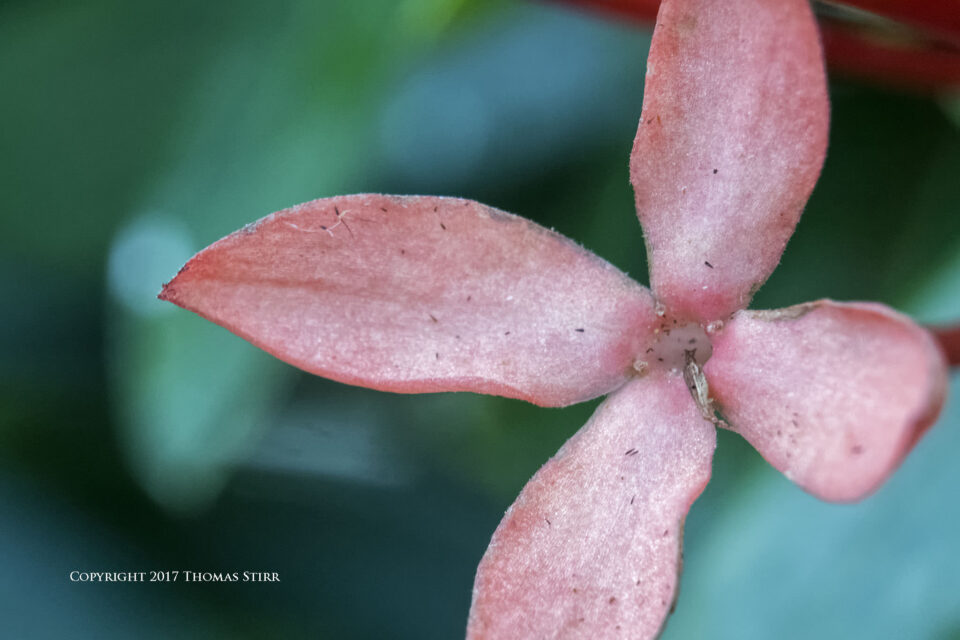
All of the images presented in this article are full frames as captured without any cropping. I wanted to demonstrate the amount of detail that can be achieved with an inexpensive gear set-up as well as provide examples of hand-held image framing using a non-EVF camera. A tip when framing a close-up photography image is to choose subjects and shooting angles that will incorporate smoother, less busy backgrounds. It can also be helpful to look for subjects that have some direct light on them with shadows in the background. Offsetting your subject to one side can also add some visual interest rather than always having your subject positioned in centre frame. These composition approaches can help accentuate the subject in your photograph, and add a touch of drama.
I used single point auto-focus for all of the images in this article. My Nikon 1 J5 allows me to place a single focusing point virtually anywhere on the rear screen. I find this to be extremely helpful for close-up photography as it eliminates the need to focus and recompose an image when shooting hand-held. I’ve always found using ‘focus and recompose’ technique distracting.
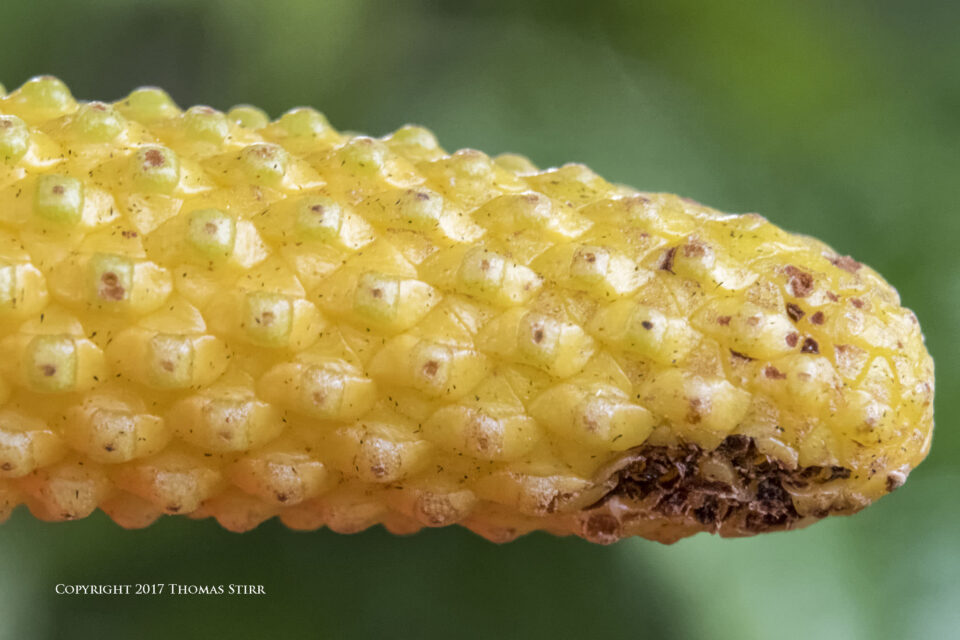
There is a trade off when extension tubes are used in terms of a loss of light. On the positive side extension tubes do not have any glass elements in them that could negatively affect image quality which, for example, is often the case with tele-converters.
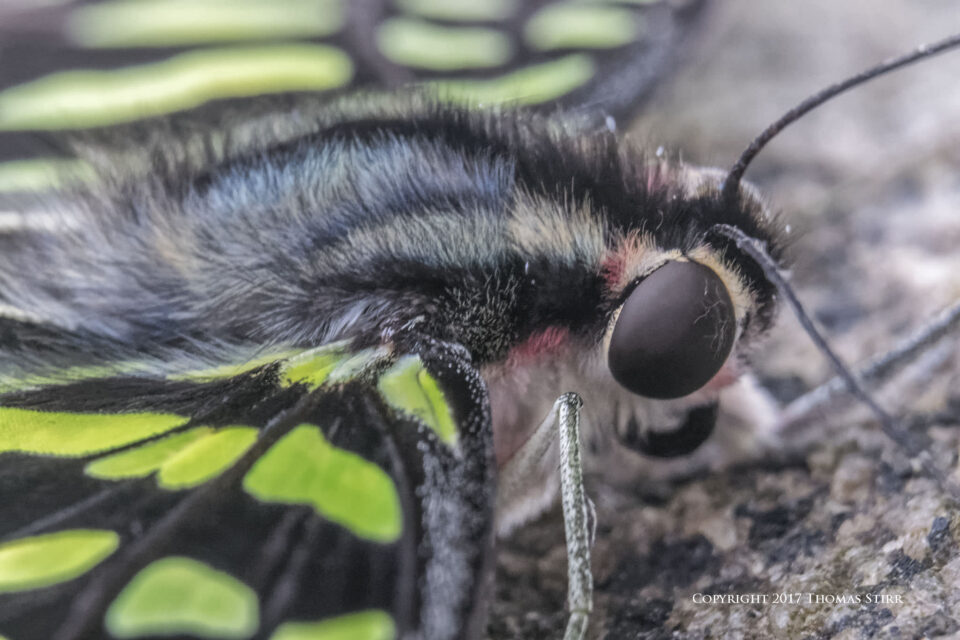
Macro lenses are specifically designed for their purpose and will provide photographers with better overall image quality and detail than when using extension tubes with lenses not specifically designed for macro photography. Having said that, a decent amount of detail can be captured when using an inexpensive set-up with extension tubes as you can see with the debris on the butterfly’s right eye in the image above.
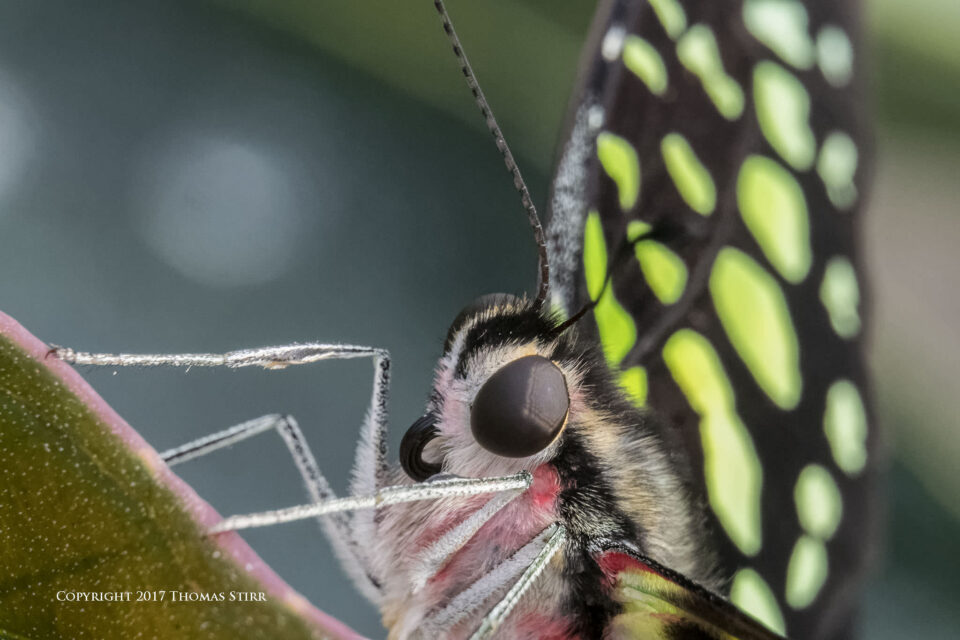
Accepting this image quality limitation, one can still have a very enjoyable time creating pleasing close-up images using a minimum of photography gear as demonstrated in this article. I love to go out with my Nikon 1 J5 set-up and shoot close-up photography subjects as it is an excellent photography practice exercise. I find that this style of photography heightens my awareness of unique lighting situations. It also allows me to pick out small details when scanning an area and see potential compositions in my mind much faster. This helps to reduce the time that it takes me to actually frame and capture an image. Practicing to work quickly and efficiently is a benefit for my industrial client work.
I much prefer capturing these types of images hand-held as I find using a tripod is far too restrictive for my rather fluid shooting style.
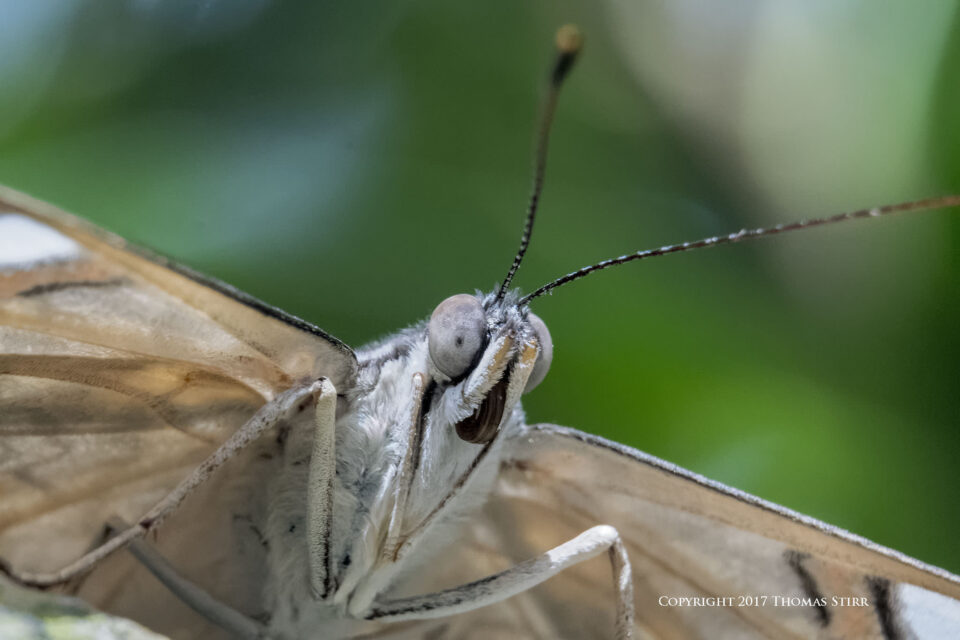
To try to achieve as much of the subject in-focus as possible it is advisable to use a shooting angle that puts as much of the subject parallel to your camera’s sensor as seen with the butterfly image above. I purposely captured this image shooting upwards toward the butterfly, rather than head-on, so I could get its head and more of its legs and body in focus. Knowing your gear is an important factor in achieving decent results, as is your hand-holding technique.
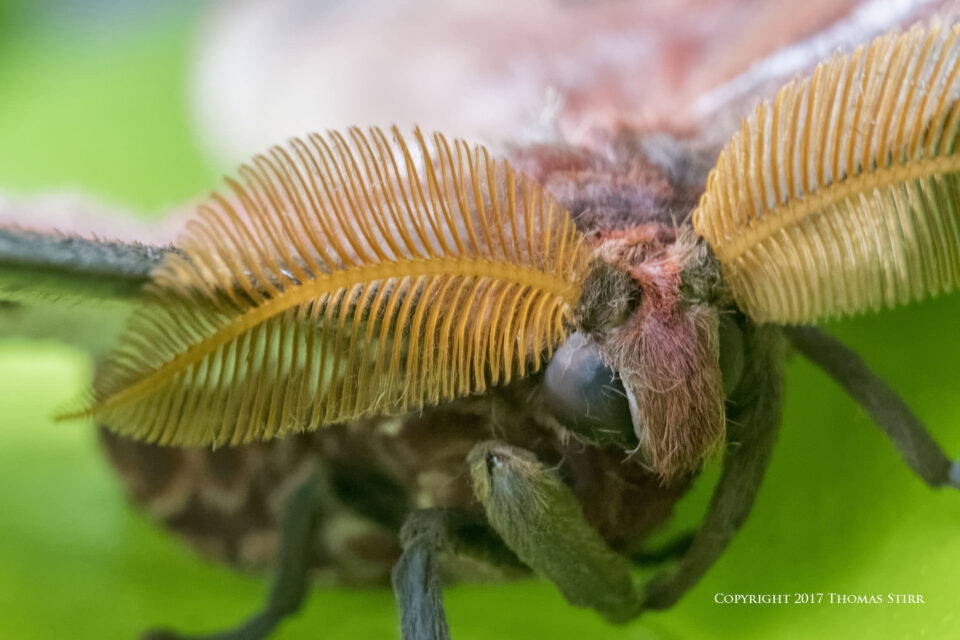
My Nikon 1 J5 does not have an EVF. This is not any kind of an impediment for me to capture close-up images as I always compose from the rear-screen of a camera when doing this type of photography. The photograph above of an Atlas Moth was one of my favourite images captured during the 2 1/2 hours I spent at the Niagara Butterfly Conservatory creating images for this article.
Technical Note:
All images in this article were produced from RAW files using my standard process of DxO OpticsPro 11, CS6 and Nik Suite.
Article and all images are Copyright 2017 Thomas Stirr. All rights reserved. No use, adaptation or reproduction of any kind including electronic or digital is allowed without written permission. Photography Life is the only approved user of this article. If you see it reproduced anywhere else it is an in-authorized and illegal use. Calling out individuals who steal intellectual property by having Photography Life readers posting comments on offending websites is always appreciated!